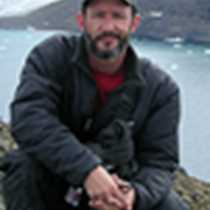Oporto, Portugal
Today was a rainy Easter Sunday. Our last stop in Portugal would be the city of Oporto, actually named Porto but with the definite article makes it Oporto or the port or harbor. The dramatic banks of the Douro River made a great backdrop for our tour of the town. We started at the main cathedral at the top of the old walled city where a grand view of the left bank was had. Across the river is where the numerous port wineries are located in Vila Nova de Gaia. After our short stop we descended to near the riverbank where we entered the Palacio da Bolsa, also known as the Stock Exchange. This ornate building which was built in the 19th century has many amazing rooms in it including the Arabian room where every square inch or centimeter has been covered in relief plaster and script from the Koran that have been put on the walls.
We then made our way around the corner to the church of Sao Francisco, which was originally built, in the 13th century, but has gone through many lives. The Baroque interiors were mostly done in the 18th century including the wood carved “Tree of Jesse” showing the ascendants of Jesus Christ. There were also portrayals of the Franciscan monks being persecuted in the Moorish areas of North Africa and as far away as Japan.
Our tour continued across the river in the heart of the port wine making area of the world with a guided tour of the Sandeman winery where we learned about the unique nature of fortified port and the methods of cultivating the wine.
After lunch some of us visited the Museum of Modern Art while other chose to return to the ship for a leisurely afternoon before David Barnes gave us a lecture on the changes in Spain since 1492. This would set us up for our visit, or pilgrimage, to Santiago de Campostella tomorrow.
Today was a rainy Easter Sunday. Our last stop in Portugal would be the city of Oporto, actually named Porto but with the definite article makes it Oporto or the port or harbor. The dramatic banks of the Douro River made a great backdrop for our tour of the town. We started at the main cathedral at the top of the old walled city where a grand view of the left bank was had. Across the river is where the numerous port wineries are located in Vila Nova de Gaia. After our short stop we descended to near the riverbank where we entered the Palacio da Bolsa, also known as the Stock Exchange. This ornate building which was built in the 19th century has many amazing rooms in it including the Arabian room where every square inch or centimeter has been covered in relief plaster and script from the Koran that have been put on the walls.
We then made our way around the corner to the church of Sao Francisco, which was originally built, in the 13th century, but has gone through many lives. The Baroque interiors were mostly done in the 18th century including the wood carved “Tree of Jesse” showing the ascendants of Jesus Christ. There were also portrayals of the Franciscan monks being persecuted in the Moorish areas of North Africa and as far away as Japan.
Our tour continued across the river in the heart of the port wine making area of the world with a guided tour of the Sandeman winery where we learned about the unique nature of fortified port and the methods of cultivating the wine.
After lunch some of us visited the Museum of Modern Art while other chose to return to the ship for a leisurely afternoon before David Barnes gave us a lecture on the changes in Spain since 1492. This would set us up for our visit, or pilgrimage, to Santiago de Campostella tomorrow.




